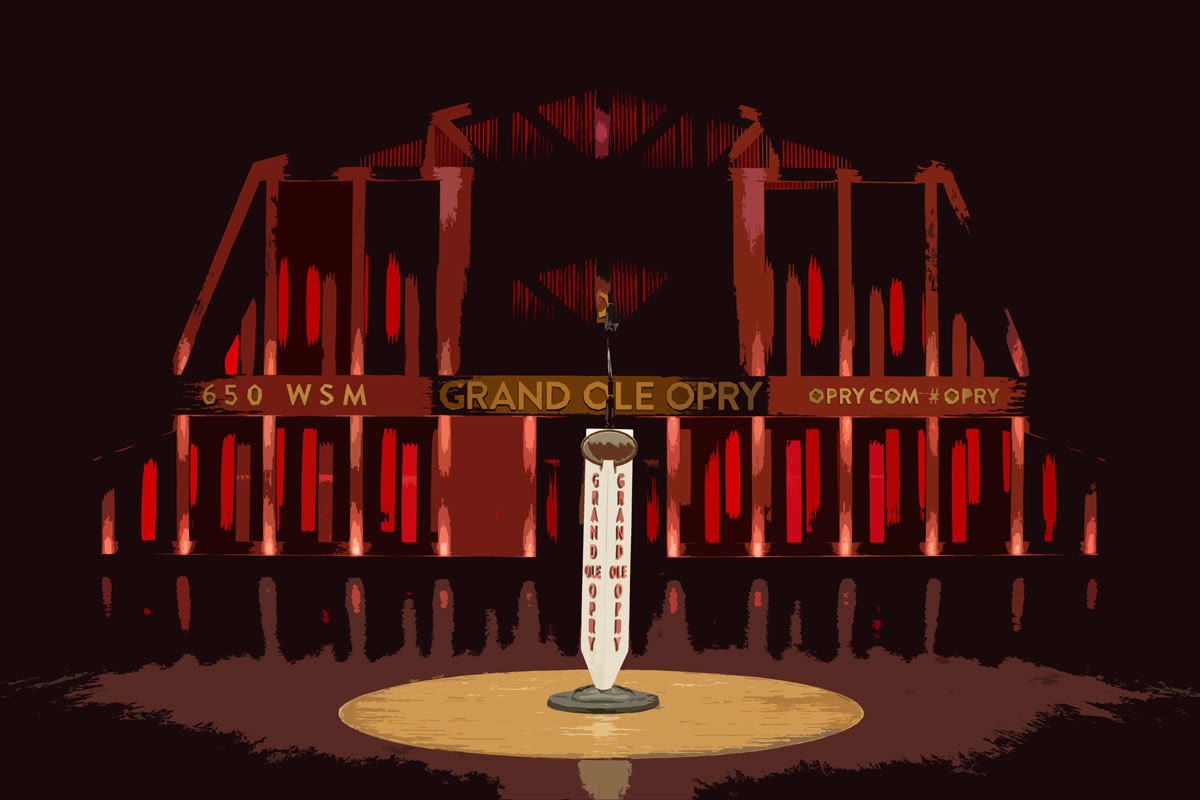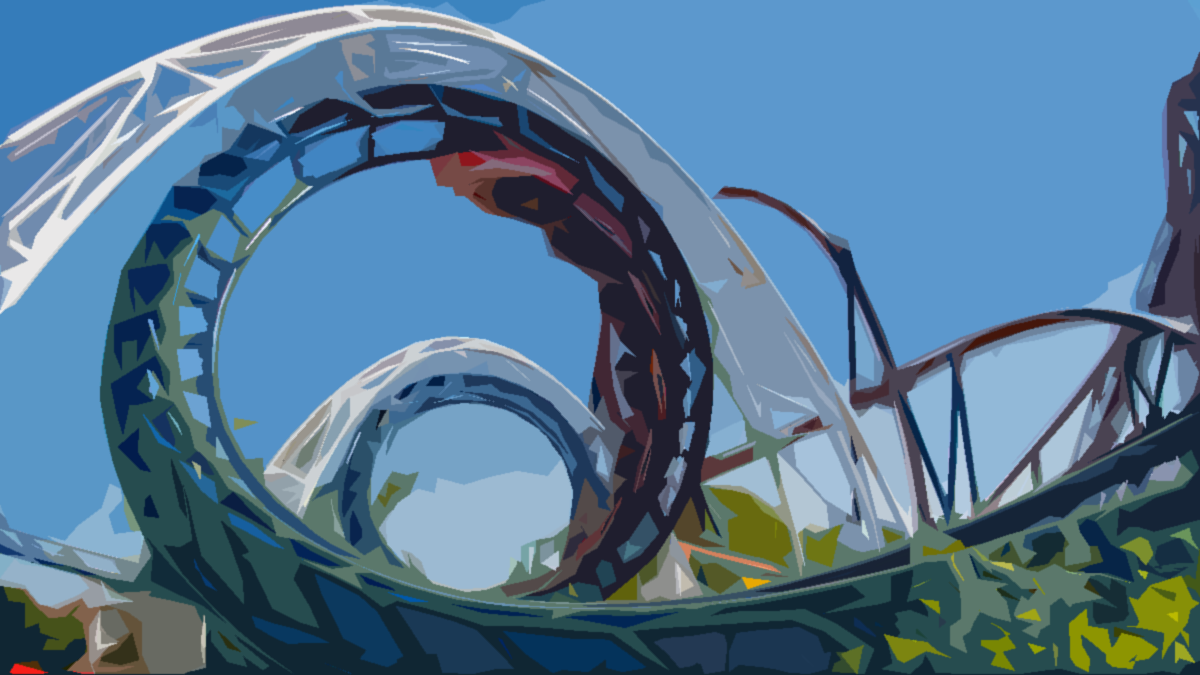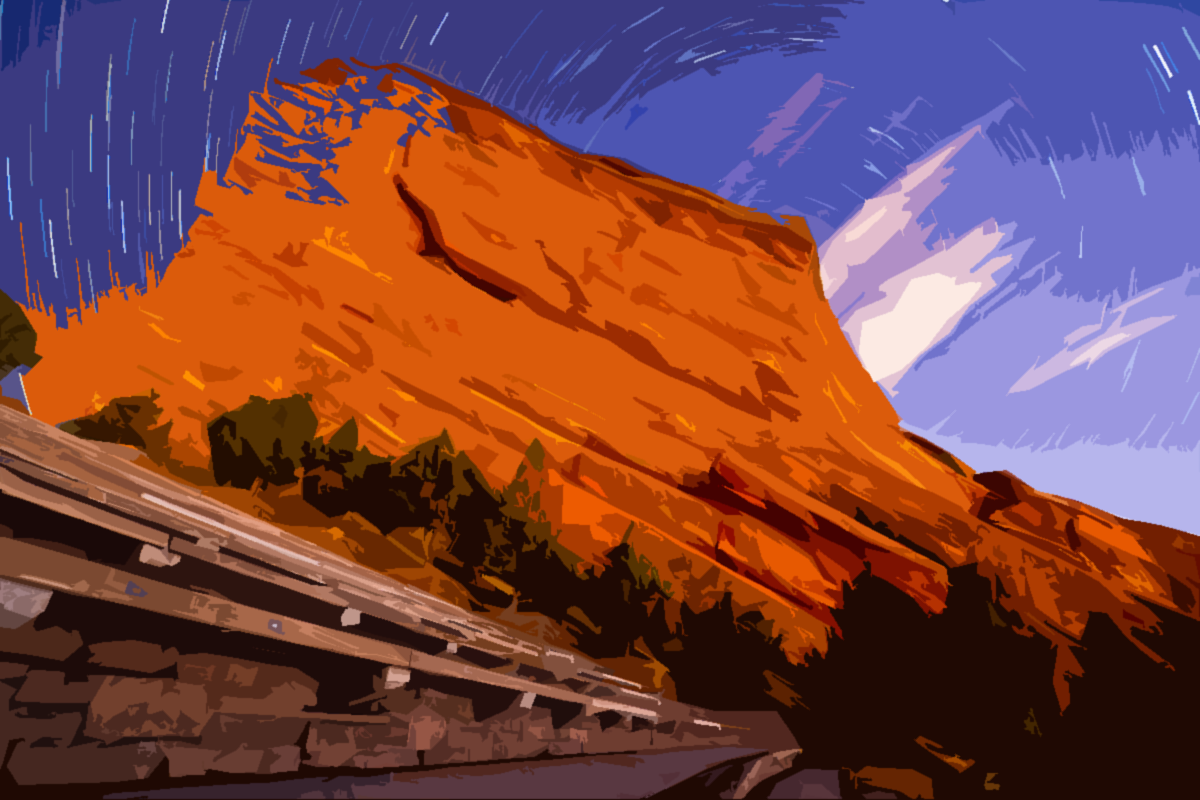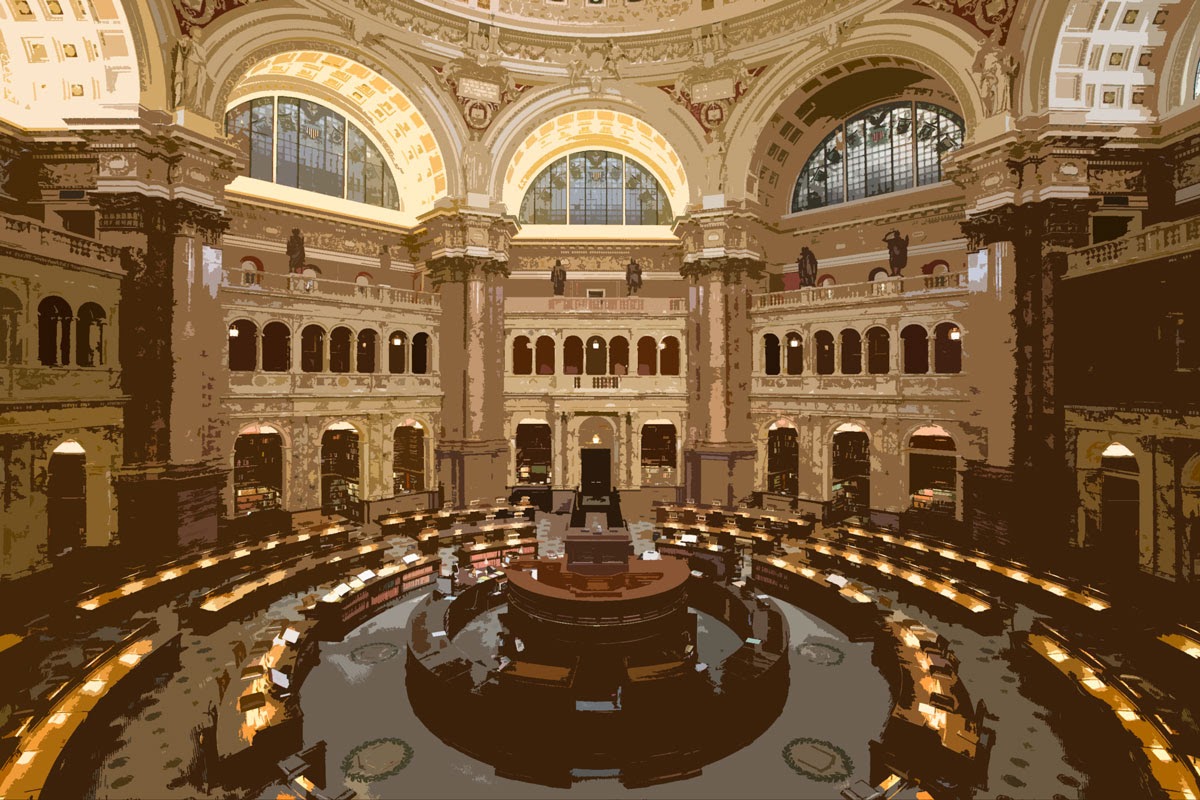By Jason Epperson
Listen Below:
On October 2nd, 1954 a young Elvis Presley stepped onto the stage of one of music’s most hallowed halls. He struck up his band and introduced his early signature high-energy rockabilly style. He played Bluegrass Musician Jim Monroe’s “Blue Moon of Kentucky,” which he had just recorded at Sun Records in Memphis with “That’s All Right.” But Elvis wasn’t Elvis yet. He bombed. The venue’s talent manager told him he should go back to his day job as a truck driver, and Presley swore never to return. Had Elvis not bombed that night, he might never have become Elvis, and we can credit the Grand Ole Opry for helping him become the artist we know today.
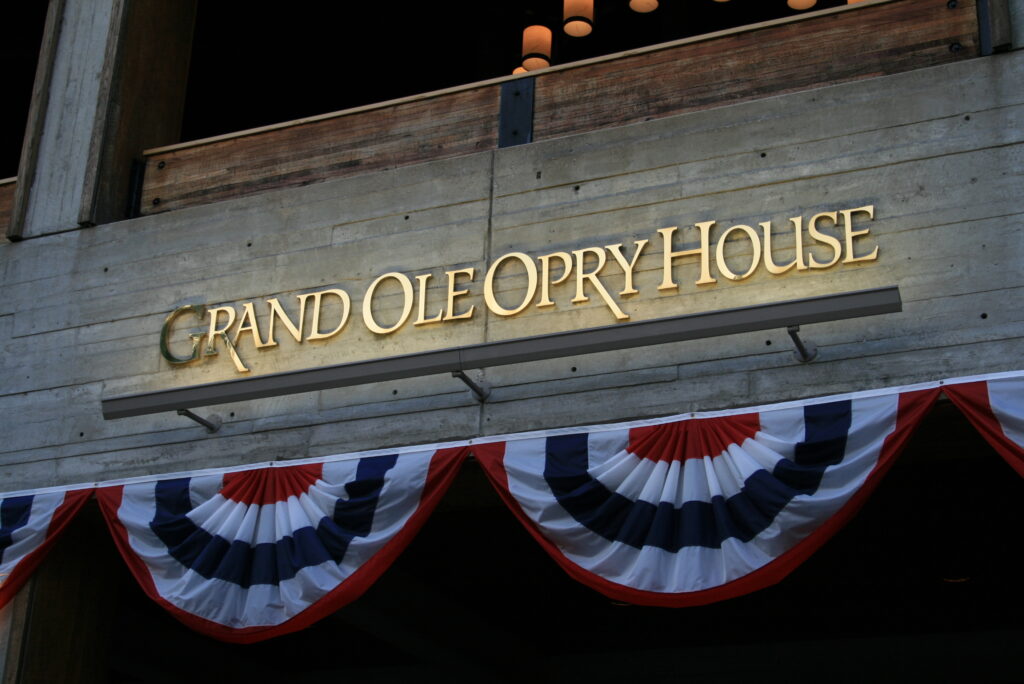
The Grand Ole Opry is Country Music:
The phrase “Grand Ole Opry” was first uttered on the radio on December 10, 1927. The NBC Red Network’s Music Appreciation Hour, a program with classical music and selections from grand opera, was followed by a show called Barn Dance. Announcer George Hay took to the mic and said: “For the past hour, we have been listening to music taken largely from Grand Opera. From now on, we will present the “Grand Ole Opry.” Back then, the Opry wasn’t really a place, it was, and still remains a weekly concert that’s broadcast on the radio. In fact, it’s the longest-running show on earth, and it’s been transmitted from the same tower, located in Brentwood, Tenn., since 1932. The tower was once the tallest in the United States.
Back in the days of the hip-swinging Elvis, the Opry was just as rooted in tradition as it is today. Two weeks after Elvis failed to swoon the audience at the Opry, he appeared on its biggest competitor, the Louisiana Hayride, and signed on for 52 Saturday night appearances on the radio show. As many music stories go, his failure at the Opry launched his legendary career.
And that’s just fine with the folks at the Opry. Heck, they didn’t even allow drums in the show until 1974, three years before Elvis’s death.
That didn’t stop Jerry Lee Lewis, who had all but disappeared. His 3rd marriage to his 13-year-old cousin hadn’t gone over well with most folks. But almost 20 years had gone by, and Lewis was making a bit of a country revival. The folks at the Opry invited him on, as long as he followed a few rules. He had promised that he wouldn’t curse, he wouldn’t be drunk and he’d do only country songs. Lewis walked out on the “Opry” stage and began with his hit country tune that got him back on the radio: “Another Place, Another Time.” But this is Jerry Lee Lewis. Whoever thought putting this guy live on country radio was a good idea really wasn’t thinking. He said “I am a rock ’n’ rollin’, country and western, rhythm and blues singin’ mother(beep)!,” live on the air, and dove into Ray Charles’ “What’d I Say,” and didn’t stop for 40 minutes, playing whatever the heck he wanted. This time, however, times had changed. The crowd ate it up. And the thing you need to know about the Opry is that a set is usually two songs! There are commercial breaks, and, ya know, the show has to end on schedule. Lewis could not have cared less. He played Merle Haggard’s “Workin’ Man Blues,” Bill Haley’s “Rock Around the Clock,” his own “Whole Lotta Shakin’ Goin’ On,” followed by The Big Bopper’s “Chantilly Lace.” Prior to his Opry appearance, Jerry Lee Lewis’s appearance fee had dropped from $10,000 to $250. He knew exactly what he was doing. His piano’s skid-marks on the Ryman Auditorium signaled the beginning of his return to legitimacy.
The Grand Ole Opry is as country as country can be. And I’m not talking about that modern country stuff. The Opry is synonymous with tradition. It’s fiddles and bluegrass and Hank Williams and … well, actually, Hank Williams was banned from the Opry. But that’s just a sad story of a legend in his final days of drinking himself to death.
Despite a few uncouth rock ‘n rollers, the Grand Ole Opry has withstood the test of time as a bastion of American music. A place where country musicians are proud to call themselves members if they’re so lucky. The Opry has brought about 200 musicians into its exclusive club. The absolute cream of the crop, who, no matter how big they get, come back to play on the Opry stage.
With over 170 million album sales, Garth Brooks even beats our friend Elvis as the most popular solo artist of all time in the U.S., second only to the Beatles for total album sales. Still, Garth said ““I’ve said it for the record a thousand times. I’ll state it again a thousand times. This is the pinnacle of what I do. Nothing has ever touched being a member of the Grand Ole Opry.”
History of the Grand Ole Opry:
One of the founders of National Life and Accident Insurance Company had a fascination with radio and convinced the company to launch its own radio station. In its downtown Nashville office, National Life built a small studio with a window, which passersby in the hallway could peer into. With call letters that were an acronym for National Life’s slogan “We shield millions,” WSM went on the air on October 5, 1925, featuring “Dr. Humphrey Bate and His String Quartet of Old-Time Musicians.” On November 2, WSM hired long-time announcer and program director George D. Hay, an enterprising pioneer from the National Barn Dance program at WLS in Chicago, who was also named the most popular radio announcer in America as a result of his radio work with both WLS and WMC in Memphis, Tennessee. Hay launched the WSM Barn Dance with 77-year-old fiddler Uncle Jimmy Thompson on November 28, 1925, just under two months after the station was launched. That date is celebrated as the birth date of the Grand Ole Opry. Soon enough, country music fans began showing up in droves to watch the show, crowding the building’s hallway to the aggravation of some National Life executives.
Studio B and then the 500-seat Studio C were built to accommodate the growing crowds. Even still, the Opry was in the need of a new home. On October 3, 1934, the Opry moved into a small community playhouse near Vanderbilt University that still operates today as The Belcourt Theatre. It was here that the Opry began selling advertising on the broadcast, and the show was divided into the sponsored segments that are still heard on the show today. The theater was small, so artists would often perform twice to separate audiences in one night.
Beginning June 13, 1936, the Opry held court at a religious meeting hall on Fatherland Street in East Nashville called the Dixie Tabernacle. It was a rustic venue with a dirt floor, wooden plank benches, and roll-up canvas walls. Advance tickets first became available, distributed to customers by salespeople at National Life and Accident Insurance Company. It was an effective sales tactic as National Life hoped to increase its business in rural and working-class communities, creating affordable payment plans for its insurance policies.
Completed in 1925, the neoclassical War Memorial Auditorium was perhaps Nashville’s most elegant performance hall, and it was here that the Opry played through World War II. The Opry also began to charge admission — 25 cents a person. Rowdy Opry fans eventually wore out their welcome and the show was forced to find a new venue.
In 1892, steamboat shipping magnate Thomas Ryman had commissioned the construction of the Union Gospel Tabernacle on the same spot where he heard Rev. Sam Jones deliver a fire-and-brimstone speech at a tent revival. The Victorian tabernacle had no air conditioning or dressing rooms, but once the Opry moved into what would become known as the Ryman in 1943, the show’s popularity took off. Lines wrapped around the venue to get into the 2,300-seat auditorium, which came to be known as the “Mother Church of Country Music.”
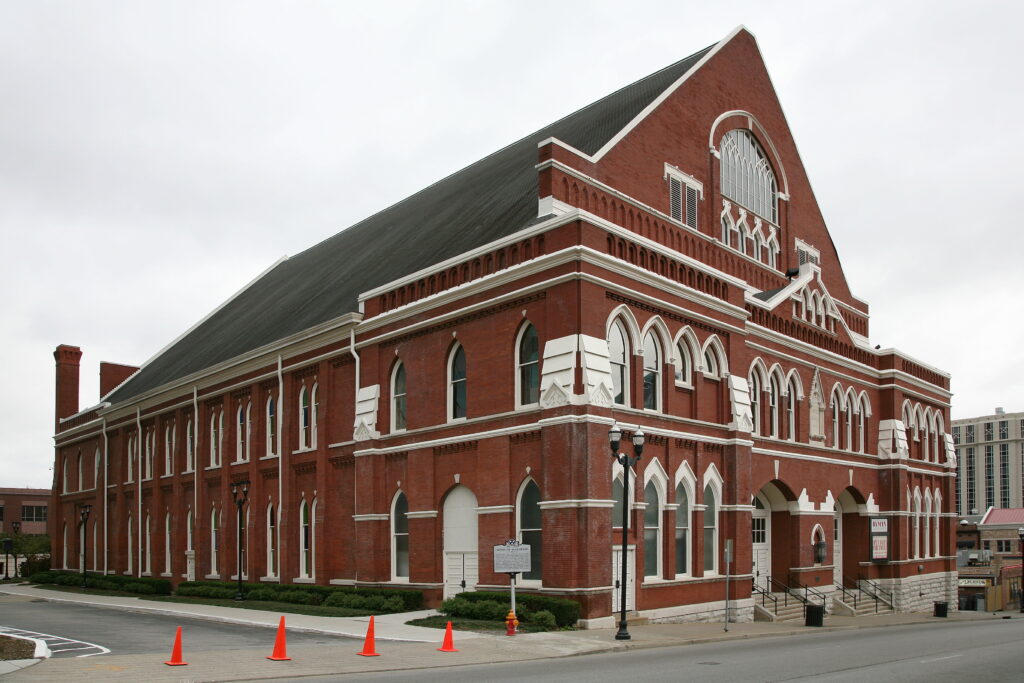
Country legend Johnny Cash made his Opry debut on July 5, 1956, where he met his future wife June Carter Cash. A decade later, he was banned from the program after drunkenly, smashing the stage lights with the microphone stand. “The night I broke all the stage lights with the microphone stand, they said they couldn’t use me anymore,” cash later said. “So I went out and used it as an excuse to really get wild and ended up in the hospital the third time I broke my nose. ” Cash was accepted back in 1968, after the success of his Folsom Prison album and his recovery from addiction.
In the 1960s, as the hippie counterculture movement spread, the Opry maintained a straight-laced, conservative image with “longhairs” not being featured on the show. The Byrds were a notable exception. Country rock pioneer Gram Parsons, who was a member of The Byrds at the time, was in Nashville to work on the band’s country-rock album, “Sweetheart of the Rodeo.” The band’s record label, Columbia Records, had arranged for The Byrds to perform at the Ryman on March 15, 1968, however, when the band took the stage, the audience’s response was immediately hostile, resulting in heckling, booing, and mocking calls of “tweet, tweet” and “cut your hair.”
By the late 1960s, National Life & Accident desired a new, larger, more modern home for the long-running radio show. The Ryman was beginning to suffer from disrepair as the downtown neighborhood around it fell victim to increasing urban decay. Despite these shortcomings, the show’s popularity continued to increase, and its weekly crowds were outgrowing the 3,000-seat venue. The Opry’s operators wanted to build a new air-conditioned theater, with greater seating capacity, ample parking, and the ability to serve as a television production facility. National Life & Accident purchased farmland owned by a local sausage manufacturer in the Pennington Bend area of Nashville, nine miles east of downtown. The new Opry venue was the centerpiece of a grand entertainment complex, which later included Opryland USA Theme Park and Opryland Hotel. The theme park opened to the public on June 30, 1972, well ahead of the 4,000-seat Opry House, which debuted nearly two years later, on Saturday, March 16, 1974. The last show of the Grand Ole Opry at the Ryman Auditorium was held the night before. A six-foot circle of oak was cut from the corner of the Ryman’s stage and inlaid into center stage at the new venue. Opening night was attended by sitting U.S. President Richard Nixon, who played a few songs on the piano. The theme park was closed and demolished following the 1997 season, but the Grand Ole Opry House remains.
The Grand Ole Opry continues to be performed every Tuesday, Friday, Saturday, and occasionally Wednesday at the Grand Ole Opry House from February through October each year, and the site was added to the National Register of Historic Places on January 27, 2015.
Visiting The Grand Ole Opry:
The Opry returns to the Ryman each winter for a special run, celebrating the Ryman’s status as the show’s famous former home. The Ryman is also one of the nation’s most active concert venues, still hosting artists from all genres, it’s renowned for its world-class acoustics.
In May 2010, the Opry house was ravaged by a flood that forced it to close its doors for five months for restoration. Even so, the show pressed on as it was held at other venues across Nashville, including the War Memorial Auditorium and the Ryman.
The Opry House was beautifully restored, and the show made its triumphant return on September 28 of that same year.
Last year, the Grand Ole Opry introduced a new custom-built theater with Backstage Tours set to music, state-of-the-art special effects, 3D film images, priceless archival footage, and hosts Garth Brooks and Trisha Yearwood.
You can visit for a tour or a performance, and you can still catch the Grand Ole Opry on the radio, or it’s modern form: streaming on the internet. What would Ole Hank think of that?
Connect and Subscribe:
To learn more about the RV Miles Network, including the RV Miles and America’s National Parks Podcasts, visit RVMiles.com.
You can hear this story and more on the See America Podcast. Available on Apple Podcasts or wherever you listen to podcasts.
Want to chat about great travel destinations all across the US? Join the See America Facebook Group and don’t forget to follow See America on Instagram, Facebook, and YouTube.

See America is sponsored by Roadtrippers. America’s #1 trip planning app. Enjoy 20% off your first year of Roadtrippers PLUS with the code RVMILES2X.

